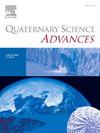Neanderthals’ recolonizations of marginal areas: An overview from Eastern Germany
IF 2.2
Q2 GEOGRAPHY, PHYSICAL
引用次数: 0
Abstract
The Middle Paleolithic in Eastern Germany presents a unique context for understanding Neanderthal populations' dynamics within environmental shifts. The cyclical ice-sheet growth and advancements during the late Middle and Late Pleistocene caused occupational gaps in North-western and Central Europe and recurring episodes of recolonization from the southern regions. From cold tundra and steppe landscapes to forested habitats during climatic amelioration, these environmental changes significantly influenced Neanderthal settlement patterns and adaptive strategies. In this study, the lithic assemblages from some Middle Paleolithic sites stretched between Saxony and Saxony-Anhalt are analyzed. Despite migrations occurring over millennia, our study reveals that the unidirectional reduction scheme was continuously applied to different knapping methods remaining a common technological substrate during the whole Middle Paleolithic. The introduction of asymmetric bifacial tools during MIS 5c/MIS 5a did not alter predominant flake production methods. Contrariwise to support a techno-cultural stasis lasted several millennia, this study reveals that this technical continuity could be related to the changes in raw material size occurred during the Middle Pleistocene. Large erratic flint nodules during the Elsterian glaciation promoted loss-making behaviors, while the transport of smaller nodules during the Drenthe glaciation encouraged more intensive exploitation of pebbles during the Late Middle Paleolithic. By shedding light on Neanderthal lifeways, technological adaptations, and settlement patterns in Eastern Germany, this research contributes to a nuanced understanding of their behavior amidst evolving environmental conditions.
尼安德特人在边缘地区的再殖民:来自东德的概述
德国东部的旧石器时代中期为理解尼安德特人在环境变化中的动态提供了一个独特的背景。在中更新世晚期和晚更新世期间,周期性的冰盖生长和推进造成了欧洲西北部和中部的职业差距,以及南部地区反复出现的再殖民事件。从寒冷的苔原和草原景观到气候改善期间的森林栖息地,这些环境变化显著影响了尼安德特人的定居模式和适应策略。本研究分析了萨克森州和萨克森-安哈特州之间的一些中旧石器时代遗址的石器组合。尽管迁移发生了数千年,但我们的研究表明,在整个中旧石器时代,单向还原方案持续应用于不同的敲击方法,仍然是一种常见的技术基础。在MIS 5c/MIS 5a期间引入不对称双面工具并没有改变主要的薄片生产方法。相反,为了支持持续了几千年的技术文化停滞,这项研究表明,这种技术连续性可能与中更新世期间发生的原材料尺寸变化有关。埃尔斯特冰期的大型不稳定燧石结核促进了损失行为,而德伦特冰期较小结核的运输促进了旧石器时代中期晚期对鹅卵石的更密集开采。通过揭示尼安德特人在德国东部的生活方式、技术适应和定居模式,这项研究有助于细致入微地了解他们在不断变化的环境条件下的行为。
本文章由计算机程序翻译,如有差异,请以英文原文为准。
求助全文
约1分钟内获得全文
求助全文
来源期刊

Quaternary Science Advances
Earth and Planetary Sciences-Earth-Surface Processes
CiteScore
4.00
自引率
13.30%
发文量
16
审稿时长
61 days
 求助内容:
求助内容: 应助结果提醒方式:
应助结果提醒方式:


